CUSPIDATA var. CUSPIDATA (engl./ fr.)
Synonym : Echeveria parrasensis Walther (1959)
Series Urbiniae
Type : Palmer s.n., collected near Saltillo in 1902. Rose 509.
Etymology : Cuspidate = ending in a sharp point, referring to the leaf tips.
Distribution : Mexico (Coahuila, Nuevo Leon)
First Description by Rose in Bulletin of the New York Botanical Garden 3: 9. 1903 :
Acaulescent.
Leaves in a dense rosette, sometimes a hundred or more, very glaucous on both sides, somewhat tinged with red, obovate in outline, about 6 cm long, often 3.5 cm broad at widest point, cuspidate.
Flowering stalk 20 - 40 cm long, glabrous and pale, sometimes rose-colored, bearing throughout its length scattered small ovate leaves free at base and acute at each end.
Inflorescence a simple secund raceme, at first strongly nodding, about 15-flowered, buds arranged in two rows, obtusish, lower pedicels elongated, 10 mm long or less.
Flowers : Sepals unequal, all much shorter than the corolla, ovate, acute, corolla 1 cm long, purplish with yellowish slightly spreading acute tips, the lobes united for about one fourth their length, stamens 10, all inserted on the corolla-tube, the 5 opposite the sepals inserted at the top of the tube, the other 5 inserted a little lower down on the tube, carpels erect, free to the base.
Link to Kimnach's description 2005 in English and French.
Read also Myron Kimnach's article : "Three varieties of Echeveria cuspidata"
Note :
Echeveria cuspidata is a very variable species. The inflorescence can have up to 3 branches and pedicels are often rather very long. Most forms of var. cuspidata are much bigger than var. zaragozae. But the flowers of all clones are almost identical.
Plants in habitat in Mexico :
Plantes dans l'habitat, au Mexique :
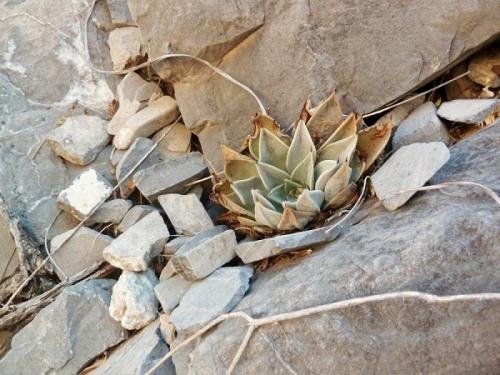
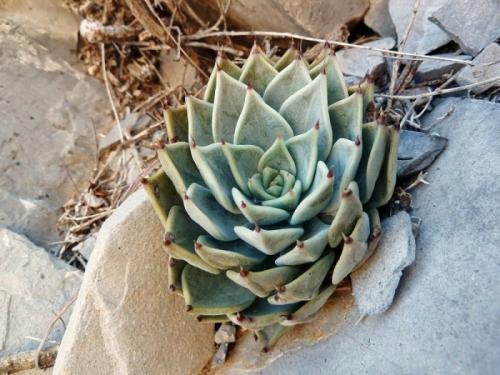
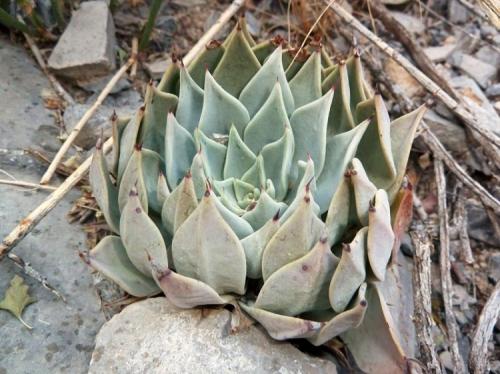
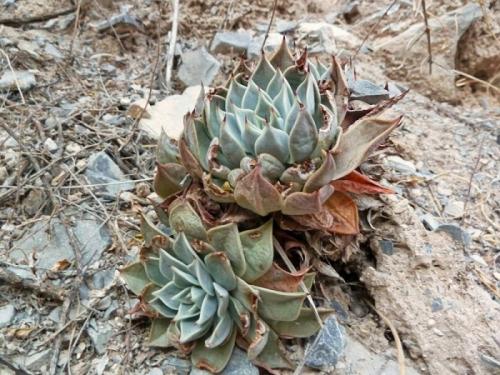
Plants in cultivation :
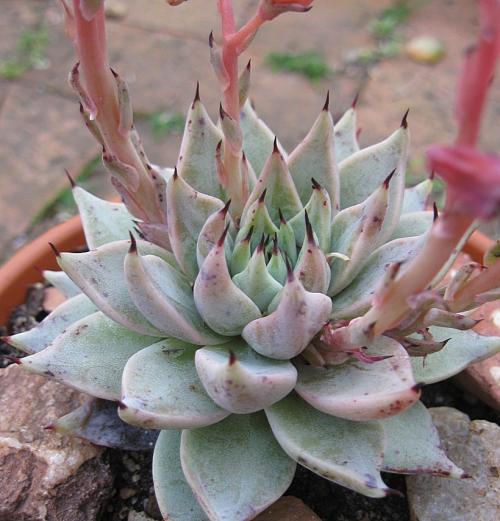
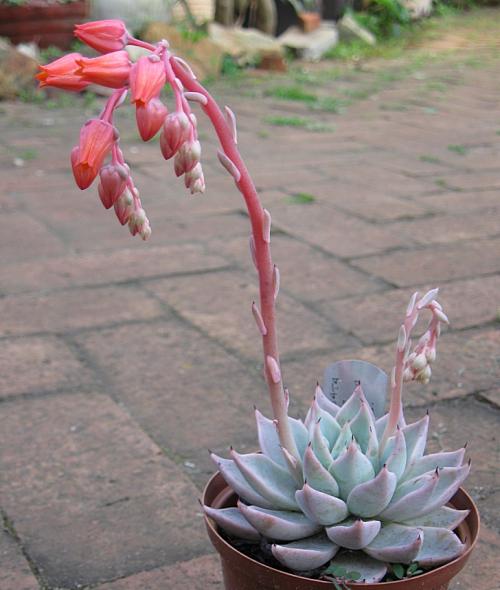
Photos Jacquie Koutsoudis
.jpg)
.jpg)
Photos Christophe Camassel

Photo Joop van Keppel
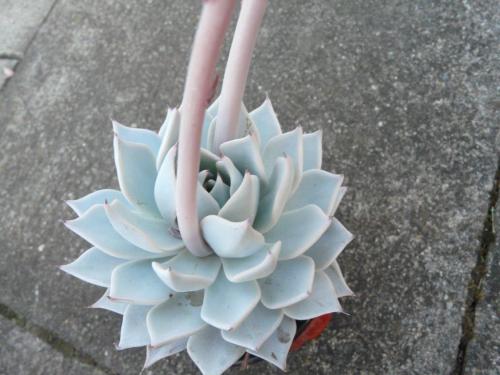
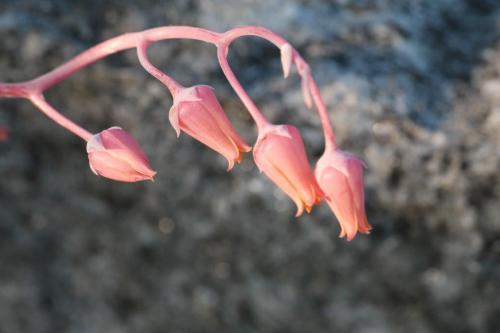
Photos Margrit Bischofberger
A variegated form :
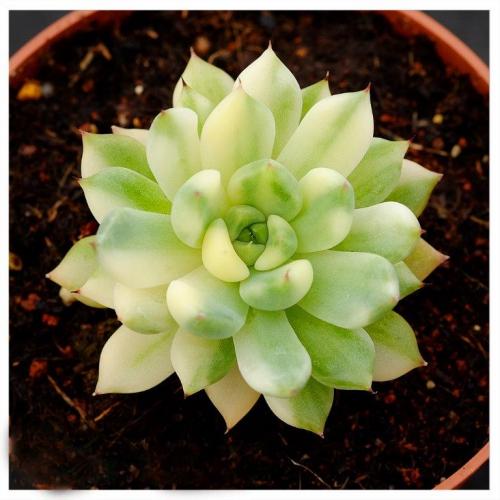
Photo Leo Gonzalez